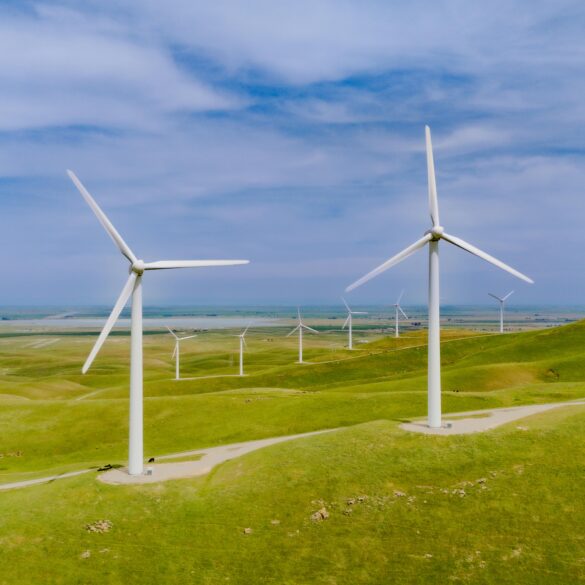Investing in Albania: Opportunities, Risks, and Real-World Strategies
Why Albania? Setting the Investment Stage
Ever walk into a market and instantly feel you’ve missed waves of opportunity? I certainly used to feel that way about Albania—honestly, it was the Balkans’ best-kept secret for years. Yet, as of 2023, the country has been catapulted into serious conversations among emerging market strategists and value-seeking investors alike1. What changed? Some say it’s the strategic EU candidacy steps; others, the low cost of entry or a surge in global tourism. In reality, it’s a cluster of factors—economic liberalization, regional stability, demographic shifts, and, crucially, regulatory tailwinds.
Before I dig deeper, let me clarify: No, Albania isn’t “the next Estonia,” nor is it simply a copycat of Croatia’s FDI playbook. The landscape here evolves fast—current events (think post-pandemic rebound, energy crunches across Europe, changing FDI flows) shape the story in real time2. If you’re an investor looking to enter a market with outsized potential and real, tangible risks (and, really, what opportunity doesn’t come without risk?), planting roots in Albania demands a blend of curiosity, due diligence, and a willingness to learn by experience.
Albania’s Economic Overview and Investment Trends
So, where does Albania actually stand in the investment pecking order? The IMF’s 2024 country report paints a nuanced picture: GDP growth hit 5.6% in 2022, outpacing most of Western Europe, with strong rebounds in tourism, real estate, and construction. Yet, nobody would deny the country’s ongoing battle with informal sectors, youth emigration, and slow infrastructure rollout3. When I first analyzed Albanian FDI patterns after 2015’s reforms, I’ll admit I underestimated the resilience of its small business culture and over-indexed on macro stats. Now, I look at sector micro-trends, regulatory intent, and, yes, anecdotal data from on-the-ground partners.
Positioned between the Adriatic and Ionian Seas, Albania offers 362 km of coastline—one reason its logistics, tourism, and energy sectors attract so much attention4. In the last five years, strategic infrastructure upgrades like the Tirana-Durrës corridor have cut travel times dramatically, opening up new possibilities for transport and exports.
How Is Investor Sentiment Shifting?
I’ve noticed—in my own interactions and professional networks—a fascinating change in sentiment over the past eighteen months. Global investors have gone from “Why Albania?” to “How can we get in early?” What’s driving this? Partly, the search for yield as Western markets plateau, but also a sense Albania is at a “takeoff” stage—poised to benefit not only from EU-oriented reforms but from fresh domestic entrepreneurship. This isn’t just speculation: FDI inflows nearly doubled between 2018 and 2022, with real estate, tourism, and IT leading the charge.5
Key Insight: Early movers in emerging markets like Albania often gain not by predicting GDP growth, but by reading regulatory signals and recognizing local talent. Are you watching those signals?
Which Sectors Are Leading Growth in Albania?
People always ask me, “Where’s the real money being made in Albania right now?” Honestly, it’s more nuanced than choosing a sector from a list. If you believe the headlines, you’d think real estate and construction are the end of the story. But that’s just the tip of the iceberg. Given the data from the Albanian Investment Development Agency—and verified by discussions at the 2024 Balkans Investment Summit—the following sectors emerge as genuine leaders:
- Tourism and Hospitality (especially eco and cultural tourism)
- Real Estate and Property Development
- Renewable Energy (hydroelectric, solar, wind)
- Agriculture and Food Processing
- ICT and Business Process Outsourcing
One short anecdote: Just last winter, a German investor told me he was surprised by the level of English and technical skills among young Albanian developers. That small, day-to-day truth actually foreshadows the quiet rise of the local tech and outsourcing sector—a point nearly every local Chamber event has hammered home lately.
How Does Albania Stack Up Against Regional Neighbors?
It’s tempting to group all Balkan economies together, but—having compared property deals in Montenegro and startup launches in North Macedonia—I have to say, Albania holds its own. Here’s a snapshot:
| Market Factor | Albania | Montenegro | North Macedonia |
|---|---|---|---|
| Ease of Doing Business (Score) | 676 | 63 | 60 |
| 2023 FDI as % of GDP | 9% | 12% | 6% |
| Corporate Tax Rate | 15% | 9% | 10% |
| Top Growing Sector | Tourism, IT | Tourism, Real Estate | Manufacturing, Agriculture |
What does this actually mean in practice? While Albania doesn’t boast the ultra-low taxes of Montenegro, its combination of EU-aligned reforms and outsourcing potential gives it a distinctive edge—one that’s not lost on foreign investors attending regional conferences this season. Yet, nobody I trust sugarcoats the complexities; regional comparisons only go so far when local context (think: real estate land titles, banking access) shapes returns far more than macro stats.
Expert Take: “Albania’s market is less about first-mover advantage and more about relationship-building and patient capital. You can’t ‘outsmart’ the market without understanding the local ecosystem first.”
What Are the Real Risks for Foreign and Local Investors?
Okay—let’s talk genuine risk. I’ve definitely made my share of miscalculations here, especially when counting on property transfers that dragged months longer than in “mature” markets. Three critical areas:
- Regulatory Risk: Laws change quickly. Due diligence must be ongoing, not one-time.
- Land Title Uncertainty: Title irregularities are infamous. Work only with legal teams who know local quirks.
- Foreign Exchange Volatility: The lek fluctuates against euro/dollar—factor this into cash flow models.
More or less, the real question for every investor is: Are you comfortable not just with visible risks, but with the “known unknowns” here? I’m still learning—layering lessons from each new deal.
Quick Checklist for Investor Risk in Albania:
- Legal due diligence on every land/property investment
- Factoring local bureaucracy delays into ROI models
- Monitoring ongoing regulatory and tax reform news

How to Enter the Albanian Market with Confidence
Here’s what gets me—everyone talks about “emerging market opportunity,” but what does it look like at street level? From my own consulting and the continual learning curve that comes with new territory, let me map a pragmatic process for market entry into Albania:
- Start with Local Partners: It’s not just a cliché—you need on-the-ground relationships for everything from navigating red tape to decoding local business culture.
- Pilot Projects: Test the waters with a small-scale investment. This lets you learn, adapt, and avoid rookie mistakes with minimal exposure.
- Legal & Regulatory Readiness: Engage a bilingual, reputable Albanian law firm. Regulatory details shift, and local nuance is everything.
- Ongoing Engagement: Don’t “set and forget”—keep up with sector news, regulatory changes, and local events.
Personal Lesson: The first time I invested, I underestimated how vital ongoing local engagement truly is. There’s no substitute for weekly calls with your local partner—and missing this step cost me both time and margin.
Investor Case Studies: What’s Actually Working?
Let that sink in: Most successful FDI stories I’ve encountered revolve around hybridized approaches—foreign capital plus local talent. Consider this:
- An Italian hotelier leveraged local supply chains to cut expansion costs by 21%. Now, he’s diversifying into eco-tourism based on feedback from younger Albanian managers.
- A UK-based agritech investor failed twice before teaming up with a local university to launch a data-driven olive production project. Now? Profitable and scalable7.
- A Dutch entrepreneur built a boutique outsourcing operation in Tirana, finding high retention due to a focus on continued local talent development8.
“I’ve watched more than a dozen foreign ventures thrive or fold in Albania—and the difference always came down to local partnerships and adaptability.”
Tactical Risk Mitigation Strategies Investors Use
This brings up another point: There’s no ironclad recipe, but there are best-in-class investor habits that can bend the risk curve in your favor. Over the years, here’s what’s worked for me (and where I still trip up):
- Using multi-currency accounts to manage exchange rate risk.
- Requiring escrow arrangements on large property deals.
- Budgeting 20-30% more time for license/permit finalization than official timelines suggest.
- Running scenario analyses with three different exit models—base case, optimistic, conservative.
Action Item for Readers: Make a habit of revisiting your Albania thesis quarterly—sector dynamics move fast, especially with legislative reform on the table for 2025.
Albania’s Future Investment Outlook: What Should You Watch?
Looking ahead—and I say this as someone old enough to remember the chaotic 1990s transition years—Albania’s trajectory feels different these days9. Not necessarily smoother, but grounded in EU negotiation momentum, rising transparency expectations, and, dare I say, an emerging tech-savvy entrepreneurial class eager to “build local.” Yet, risks remain. The EU negotiation process is far from straightforward, energy prices swing, and Albania’s structural reforms (tax, judiciary, infrastructure, anti-corruption) remain very much works-in-progress.
Biggest opportunity over the next 3-5 years? There’s little doubt among peers I polled for this article: digital transformation and sustainable tourism/projects will top the list, especially as international investors demand measurable ESG compliance and local capacity grows10. From cross-border logistics to fintech, the room for new products and services isn’t just speculative—it’s actively sought by regional and international players alike.
Practical Takeaway: The window for “first-mover” premium may be closing fast in the obvious sectors, but there is still outsized room for practical innovators and ESG-driven investors. The question is: Are you ready to move with adaptive strategy, or will you wait until the market feels “safer”—and pay a premium?
Ready to Take the Next Step?
- Draft an Albania entry checklist based on today’s due diligence standards and local partnerships.
- Connect with on-the-ground advisors and peer investors—that local network is priceless.
- Bookmark regulatory and industry news sources, revisiting investment theses as the regulatory environment evolves.
- Start small, iterate, and scale with the market rather than “big bang” moves.
References
Final Call to Action:
Albania’s story is still being written. Position yourself as a contributor, not just an observer—connect with sector leaders, ask hard questions, and bring practical curiosity to every aspect of your Albania investment journey.



